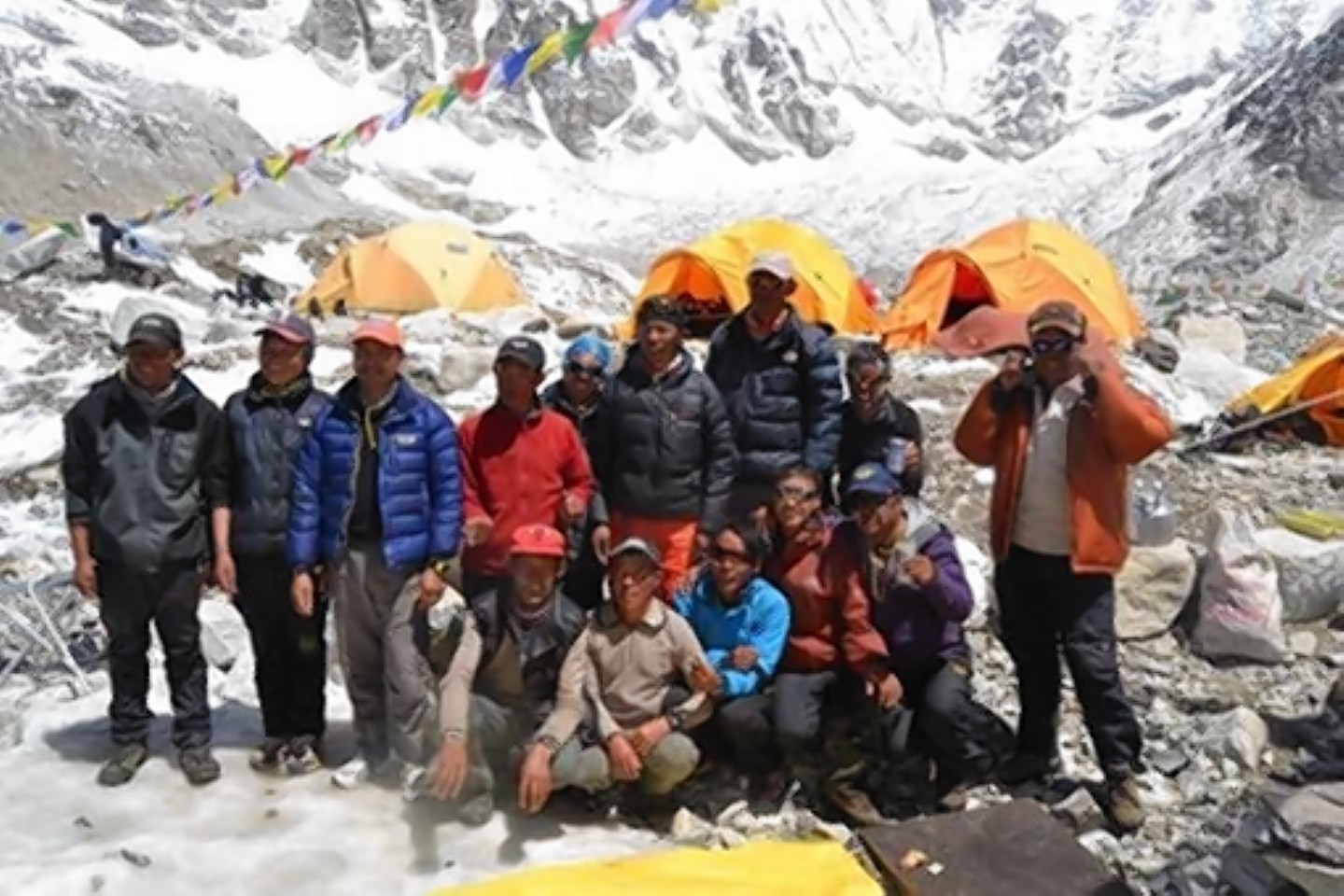Aberdeenshire mountaineers are fundraising for their sherpa friends and companions who died when the Nepalese earthquake struck the Himalayas.
Staff at Braemar Mountain Sports have liaised with the hardy mountain people in the range for around 25 years, developing close personal and working relationships with them.
Mountaineer Sue Harper had grown particularly close to high camp cook, Pasang Temba Sherpa, who was killed during the natural disaster.
He was the cook at Mount Everest’s Camp Two, at 21,000ft but died at base camp along with climbing sherpa, Tenzing, and base camp cook, Kumar.
Ms Harper and director of Braemar Mountain Sports, Colin Bruce, will be leading an “Avalanche Auction” in The Bothy, Braemar, today to generate funds for their families through the Sherpa Family Support Fund.
Pasang Temba’s family home is in the village of Pangboche, in the shadow of Ama Dablam, and his family – including three children and a grandchild – have been left with no home or income.
The long term aim of the Braemar fundraising is to buy timber to rebuild his house and to support others affected in the Himalayas.
Ms Harper, 54, lived in Braemar for years whilst working as a ski instructor and organises expeditions and treks to the Himalayas several times a year.
She said: “I first went out there to look at Everest really in 2003 and then in 2004 I climbed to the summit. Since I climbed it I was involved with expeditions, helping expeditions there and leading trekking there.
“When I first went to Everest that is when I met Pasang Temba first. I have known him all that time. I have been to his house and stayed in his house.
“Pasang Temba was our cook and would spend most of the climbing season there. Unfortunately this spring he just happened to be at base camp.
“They have to go where there is work, so I don’t know when they last had seen their children.”
Ms Harper has been in contact with friends in Pangboche who said that the situation was “really desperate”, adding: “They don’t have enough money. It is going to cost about £15,000 to rebuild Pasang’s house.”
“I feel really close to these people. They are so hospitable and they have nothing. I feel now it is our turn to help them. They helped me to climb to the summit of Everest.”
Mr Bruce said: “We are raising money to help rebuild their houses after the earthquake and also to support the families of those that were killed.
“The response to our fund raising evening in The Bothy at Braemar on Friday has been overwhelming. Tickets were sold out within 48 hours.”
History of the Sherpa people
The Sherpa people are an ethnic group originating from the Himalayas.
They are regarded across the world as outstanding mountaineers and the foremost experts of their mountainous home turf.
Their strength, resilience and expertise as mountain guides is noted and valued across the world.
Ms Harper said: “They are a mountain race. There is nothing of them bu they are so strong. They live at quite high altitudes.
“Sherpas have different roles on an expedition. Pasang Temba, he was our cook at camp two, about halfway up the mountain.
“We spent a lot of time at camp two acclimatising, you can’t just go from the base camp to the summit.
“Tenzing was what you call a climbing sherpa. He would carry tents and oxygen up the mountain and accompany climbers to the summit.
“The sherpas do so much for us, helping us climb and organise expeditions. This is our chance now.”
Mr Bruce said: “Over the years many of our friends and customers at Braemar Mountain Sports have climbed on Everest. They all recount how hard working, skilled and kind the Sherpas are.”
